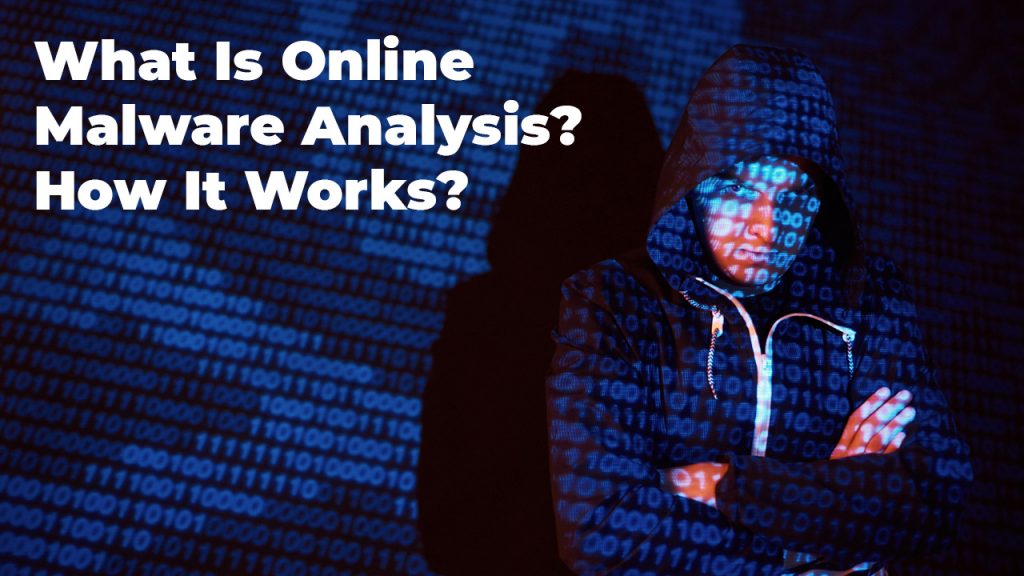
Malware is still a big hazard to companies and individuals worldwide. There are several malware varieties since the umbrella word refers to any sort of harmful program or file. A single email attachment may cause a crisis that costs a corporation millions of dollars.
When responding to a security problem, analysts employ malware analysis online tools to determine the severity of the event and aid in their investigation. In this article, we’ll go through malware analysis procedures and what to look for in an online malware analysis tool.
What exactly is malware analysis?
Malware analysis is a collection of techniques and tools used to determine the intent and behavior of a suspicious file. Analysts use this realistic technique to examine and learn how each sort of malware works.
Analysts can learn how to identify and destroy malware by researching its behavior. The procedure entails evaluating the suspicious file in a secure environment in order to fully comprehend its properties utilizing malware analysis tools.
Malware analysis is divided into four phases.
Static Properties
Analysts begin by examining components such as strings encoded in malware code, headers, metadata, and other signs of infiltration. Because they do not need to run the code to identify it, security teams can obtain this data rapidly.
Behavior that is interactive
Analysts next examine how the malware sample acts. To do this, they perform dynamic analysis on a malware sample running in a lab. This assists them in comprehending specifics regarding the sample and its activity. They can test the malware functionality in a controlled setting.
Analysis that is completely automated
The next step is to do a completely automated examination of suspicious files. The purpose of this investigation is to establish the implications of malware infiltration into the network. This study is extremely effective when dealing with large amounts of malware.
Reversing the code manually
Finally, researchers try to decipher the logic behind the malware code and determine whether there are any hidden capabilities in the virus that they haven’t discovered yet. To do this, analysts frequently reverse-engineer the code. Some security teams will skip this stage since it is time-consuming.
Malware analysis types
Analysts do malware analysis in either a static or dynamic mode or a combination of the two
Malware Analysis at a Glance
This form of analysis looks at the file while it is still open. It does not necessitate the execution of the code. Static analysis is used to detect malicious intent and indications in infrastructure, libraries, and resting files.
When performing static analysis, you may look at filenames, IP addresses, and headers to identify whether or not the file is malicious. Analysts utilize technologies such as network analyzers to observe malware features without having to run them.
The disadvantage of static analysis is that it might miss dangerous runtime behavior. For example, if a file initiates the download of a malicious file based on a dynamic string, the static analysis will miss it.
Dynamic Malware Analysis
This method of malware analysis executes the code in a safe environment known as a sandbox. This secure technology allows security experts to monitor malware activity without the danger of infecting the network or machine.
Dynamic malware analysis provides security teams, threat hunters, and incident responders with a more in-depth understanding of how the malware operates and its severity level.
The issue with dynamic malware analysis is that attackers are getting better at identifying sandboxes. Adversaries typically conceal programs within sandboxes that remain inactive unless prompted to launch the code.
Hybrid Analysis
Security teams frequently mix static and dynamic analysis to overcome the limitations of both methodologies. As a result, it combines the best of both methodologies, assisting in the detection of undiscovered dangers. It can, for example, uncover hidden code by static analysis of behavioral data and then use dynamic analysis to validate observed changes.
What are the benefits of malware analysis?
The apparent benefit of malware analysis is that it allows you to extract information from the malware sample and use it to respond to the incident and avoid future assaults. The purpose of malware analysis is to determine the severity of the infection, as well as how to identify and contain it. It also aids in identifying trends that may be used to avoid future attacks.
Some of the reasons why businesses should use malware analysis include:
- When doing malware analysis during an event to determine the extent to which the system has been affected and the consequences of the attack.
- To determine if or not there are network indications linked with the malware that may be used to detect similar infestations. For example, if the virus communicates with a certain IP address, you can block it.
- Malware analysis may be used to prioritize events based on their severity.
- To provide more context for danger hunting actions.
What features should malware analysis tools have?
There are both free and commercial malware analysis programs available online. A list of free tools may be found here. Organizations that want more sophisticated security capabilities may consider purchasing premium versions with more comprehensive features. Some of the characteristics seen in top malware analysis programs include:
- Give you visibility into the processes that are executing on your device.
- The malware’s hashes and a list of strings are provided.
- Determines whether or not the virus is packed and displays the file’s entropy level.
- It enables the import of functions and the creation of new operating processes.
- Sandbox sessions are logged and recorded. There, you may identify the process that was formed as well as the location where the software was run.
- Capabilities for debugging and reverse engineering
Because no one tool can provide all capabilities, most businesses mix numerous technologies at different phases of the malware analysis process. Because malware is continually evolving, obtaining information about a single file is not always simple. Hopefully, the techniques described in this article will help you comprehend malware analysis.